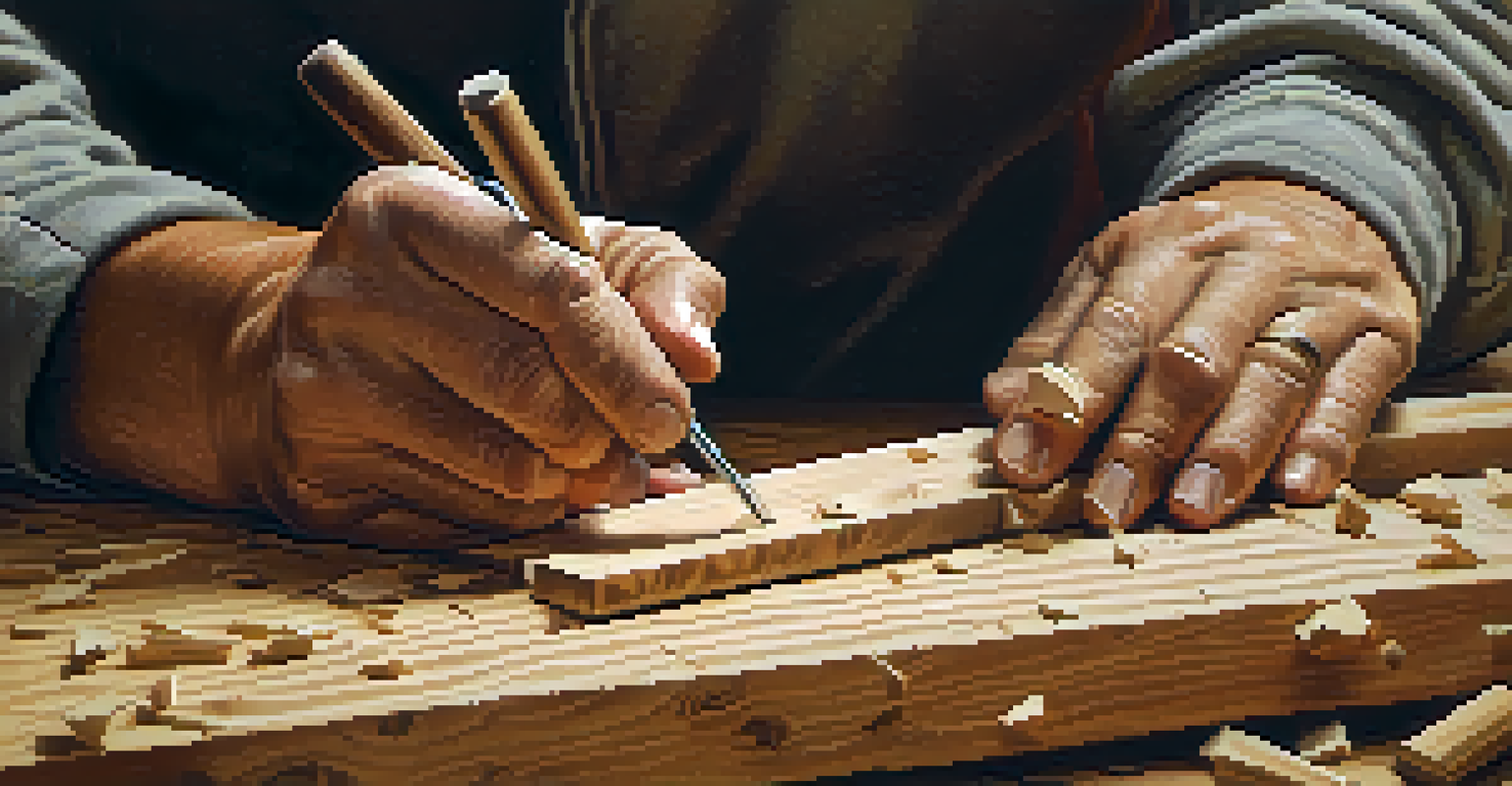Crafting a Business Plan for Your Carving Venture

Understanding the Importance of a Business Plan
A business plan is a crucial roadmap for your carving venture. It helps you outline your goals, strategies, and the steps needed to achieve them. Think of it as a blueprint; without it, you might find yourself lost in the intricate details of running your business.
A goal without a plan is just a wish.
By taking the time to create a comprehensive business plan, you can identify potential challenges and opportunities early on. This proactive approach allows you to make informed decisions that can steer your carving business toward success. It’s like having a compass that guides you through the woodwork of entrepreneurship.
Moreover, a well-crafted business plan is invaluable when seeking funding or partnerships. Investors and lenders want to see that you have a clear vision and a strategy to achieve it. A solid plan can instill confidence in your carving venture and attract the support you need.
Defining Your Vision and Mission
Start your business plan by clearly defining your vision and mission. Your vision is the big picture—what you aspire to achieve with your carving business. Meanwhile, your mission outlines your purpose and the values that guide your work. Together, these elements set the tone for everything you do.

For example, if your vision is to create handmade, sustainable wood carvings that celebrate nature, your mission might include a commitment to eco-friendly practices. This clarity not only helps you stay focused but also resonates with customers who share your values.
Business Plans Guide Success
A comprehensive business plan outlines your goals and strategies, serving as a roadmap to navigate the challenges of entrepreneurship.
Be sure to articulate these points in a way that reflects your passion for carving. When your vision and mission are authentic, they become a powerful tool for connecting with your audience and driving your business forward.
Identifying Your Target Market
Understanding your target market is essential for tailoring your products and marketing strategies. Start by researching who would be interested in your wood carvings—are they art collectors, home decorators, or perhaps gift shoppers? Knowing your audience allows you to create pieces that speak directly to their tastes and preferences.
The only way to do great work is to love what you do.
Creating customer personas can be a helpful exercise. Imagine the typical person who would buy your work: What do they value? What problems do they want your carvings to solve? This insight will guide your product development and marketing efforts.
Additionally, identifying your target market helps you choose the right platforms to reach them. Whether it’s social media, craft fairs, or online marketplaces, knowing where your potential customers hang out makes your marketing efforts more effective.
Analyzing Your Competition
A competitive analysis is a key component of your business plan. By studying your competitors, you can identify what they’re doing well and where there might be gaps in the market. This insight can inform your own carving business strategy and help you carve out your unique niche.
Start by listing your main competitors and analyzing their strengths and weaknesses. Look at their product offerings, pricing strategies, and customer reviews. This will give you a clearer picture of what works and what doesn’t, allowing you to position your carvings effectively.
Define Your Vision and Mission
Clearly articulating your vision and mission helps align your business practices with your values, fostering a deeper connection with your audience.
Remember, competition isn’t just about rivalry; it’s also about inspiration. Learning from others in the carving space can spark new ideas and help you refine your own craft. Embrace the opportunity to stand out in a crowded market.
Setting Clear Goals and Objectives
Once you have a solid understanding of your market and competition, it’s time to set clear goals and objectives. These should be specific, measurable, achievable, relevant, and time-bound—often referred to as SMART goals. For instance, you might aim to sell 100 carvings in your first year or participate in five local craft fairs.
Having defined goals helps you stay focused and motivated. They serve as milestones to track your progress and celebrate your accomplishments along the way. Plus, when you have clear objectives, it's easier to adjust your strategies as needed.
Don’t forget to revisit and revise your goals regularly. As your carving business grows and evolves, so too should your aspirations. Staying adaptable is key to long-term success.
Creating a Marketing Strategy
Your marketing strategy is how you’ll promote your carving business and attract customers. Start by outlining the channels you plan to use, such as social media, email newsletters, or local events. Each platform has its own strengths, so choose those that align with your target market.
Consider the type of content you’ll create to engage your audience. For example, showcasing the carving process through behind-the-scenes videos can draw potential customers in and give them a glimpse into your craftsmanship. Storytelling can be a powerful way to connect with your audience.
Know Your Target Market
Identifying your target market enables you to tailor your products and marketing efforts to resonate with potential customers effectively.
Finally, set a budget for your marketing efforts. Knowing how much you can invest will help you prioritize your strategies and measure their effectiveness. A solid marketing plan can elevate your carving venture and bring your art to a wider audience.
Financial Planning and Budgeting
Financial planning is a critical part of your business plan. Start by estimating your startup costs, including tools, materials, and any overhead expenses. Understanding your financial needs will help you secure funding and manage cash flow effectively.
In addition to initial costs, create a budget for ongoing expenses like marketing, supplies, and utilities. This will give you a clearer picture of your financial landscape and help you make informed decisions about pricing and sales.

Don’t forget to project your revenue based on your goals. While it’s important to be realistic, aiming high can motivate you to achieve more. Regularly reviewing your financial plan will keep your carving venture on track and ready for growth.